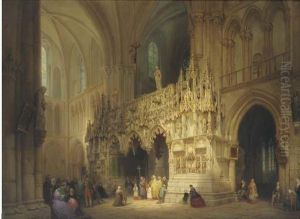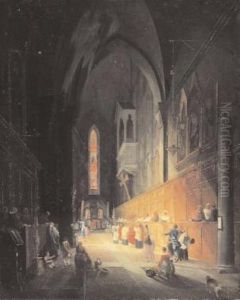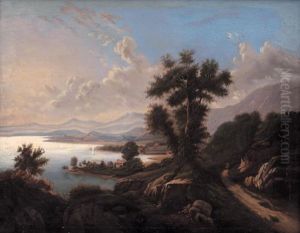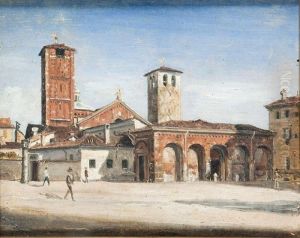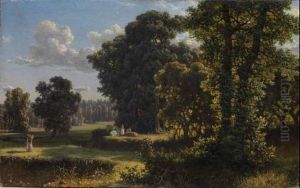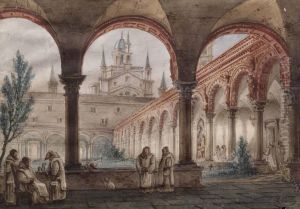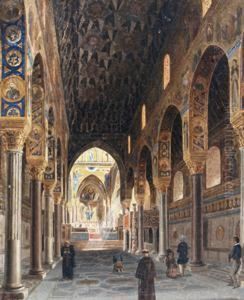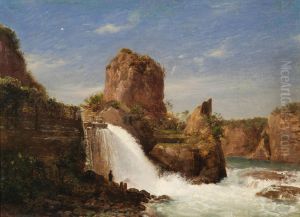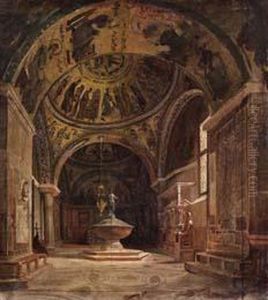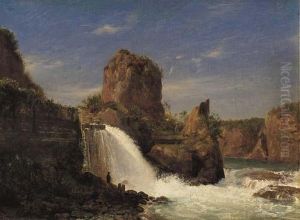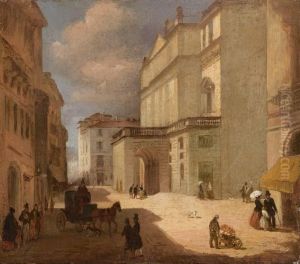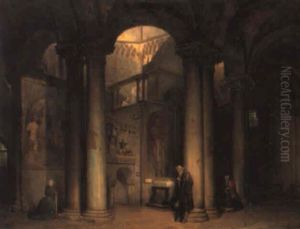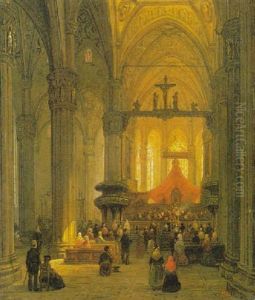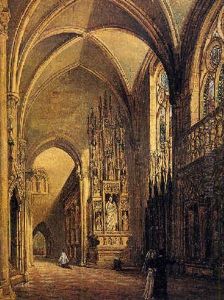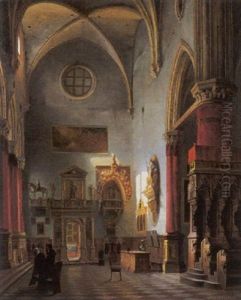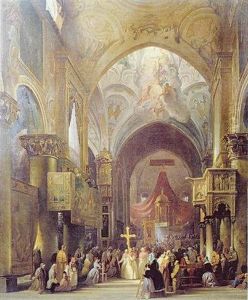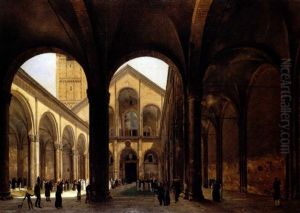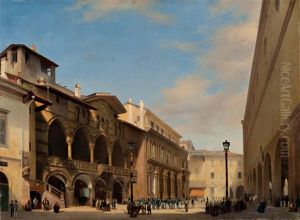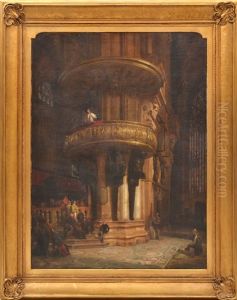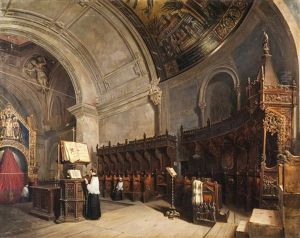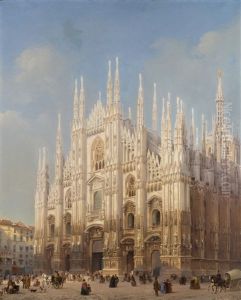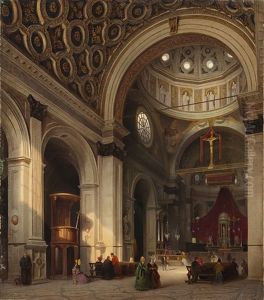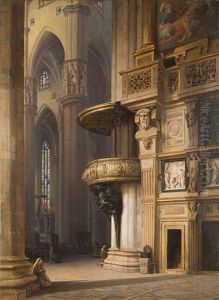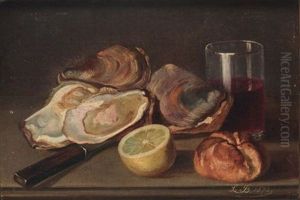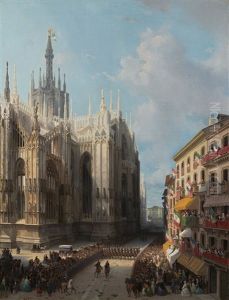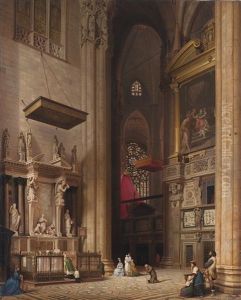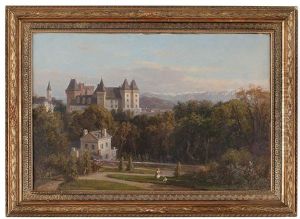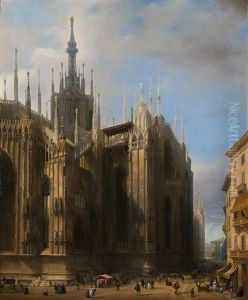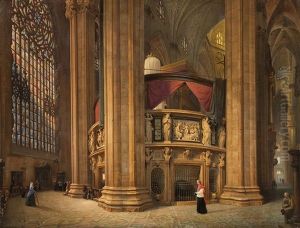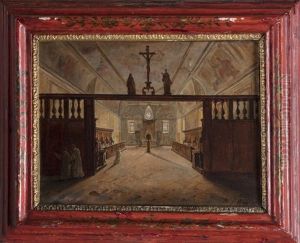Luigi Bisi Paintings
Luigi Bisi was an Italian painter, architect, and professor, renowned for his intricate architectural paintings and contributions to the Lombard art scene of the 19th century. Born in Milan, Italy, on May 10, 1814, into a family already established in the arts—his father, Michele Bisi, was a well-known engraver—Luigi was destined to follow a creative path. He studied at the Brera Academy, one of the most prestigious art schools in Milan, where he was deeply influenced by the Romantic movement, which was at its peak during his formative years.
Luigi Bisi's work is most celebrated for its detailed architectural interiors and cityscapes, capturing the grandeur and decay of Italy's rich urban and ecclesiastical heritage with a meticulous eye. His paintings often feature the Gothic and Renaissance buildings of Milan, including the iconic Duomo di Milano, which he depicted with an accuracy and attention to detail that almost transforms his paintings into historical documents.
Beyond his artistic pursuits, Bisi was also a significant figure in the academic and cultural circles of Milan. He held a professorship at the Brera Academy, where he influenced a generation of artists with his teachings on perspective and architectural drawing. His commitment to the arts extended to his involvement with the Accademia di Belle Arti di Brera, where he served in various capacities, including as its president.
In addition to his paintings and academic contributions, Luigi Bisi was also known for his architectural projects, though few have survived or were realized to the extent of his painted works. His legacy is primarily carried through his breathtakingly detailed paintings that continue to offer viewers a window into the 19th-century Italian landscape and its architectural beauty.
Luigi Bisi passed away on November 11, 1886, in Milan. His death marked the loss of one of the most prolific and respected artists in the Italian art world, whose works remain in collections and museums across Italy and beyond, celebrated for their technical precision and the beauty they capture.
